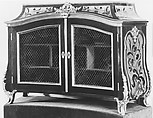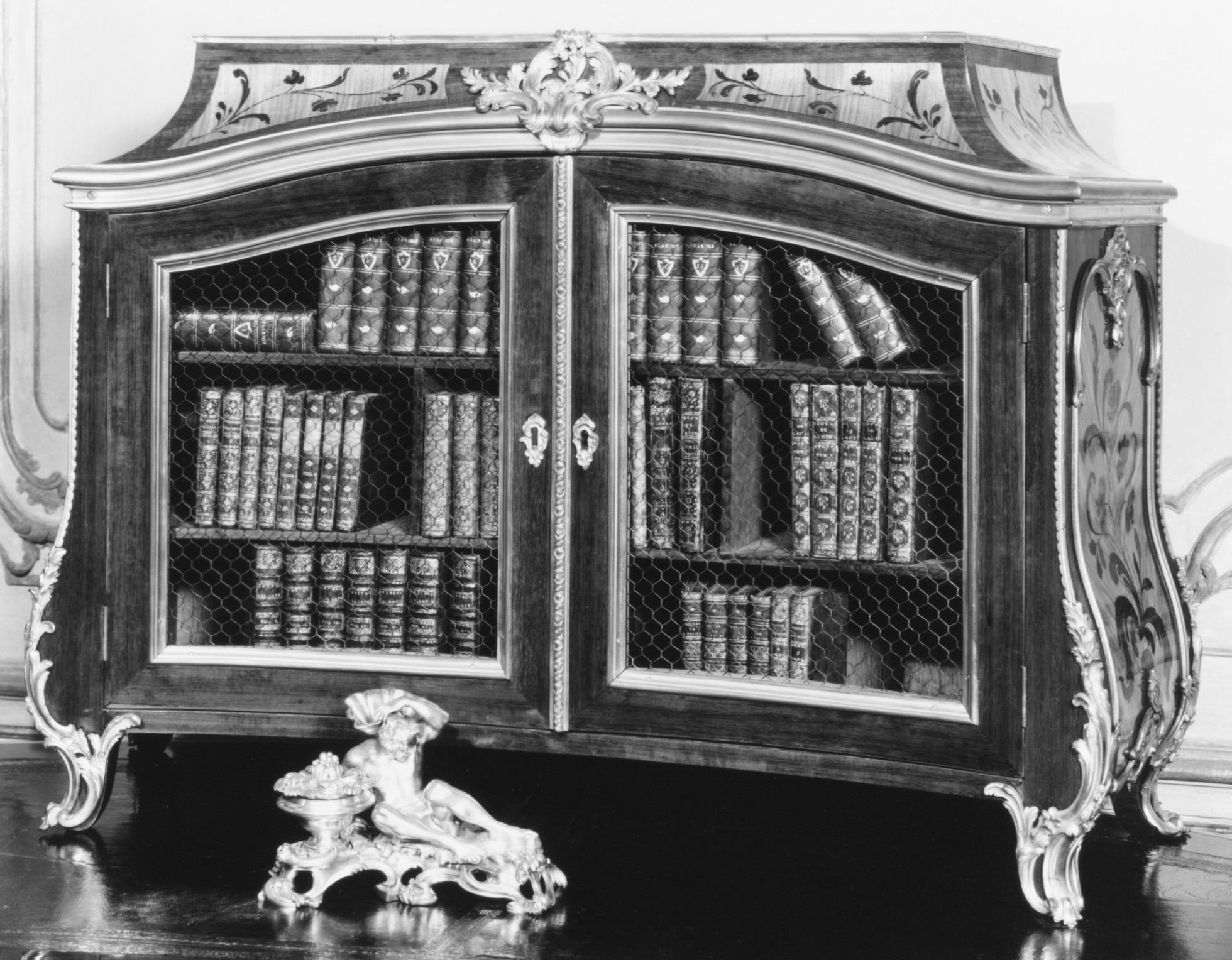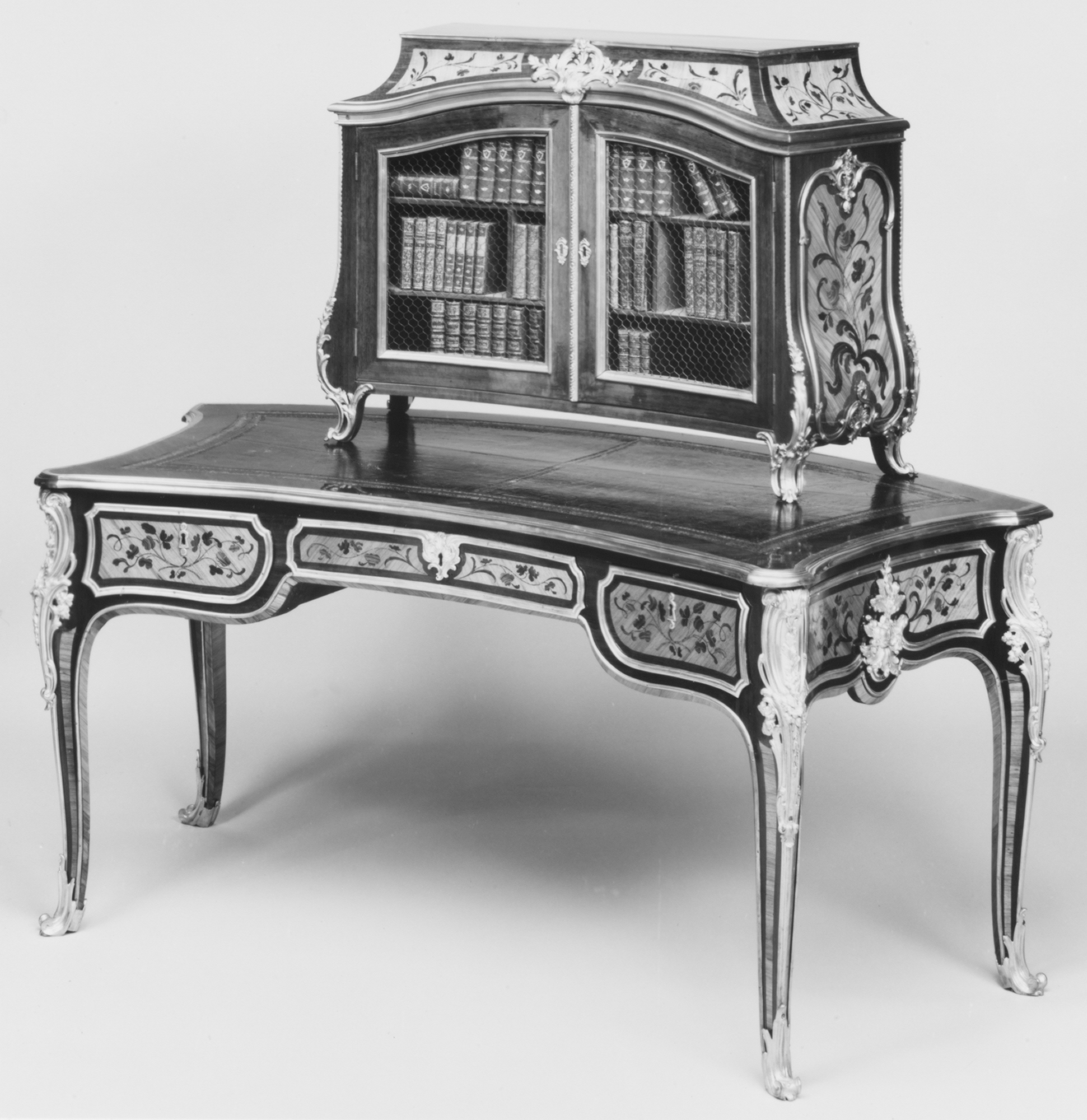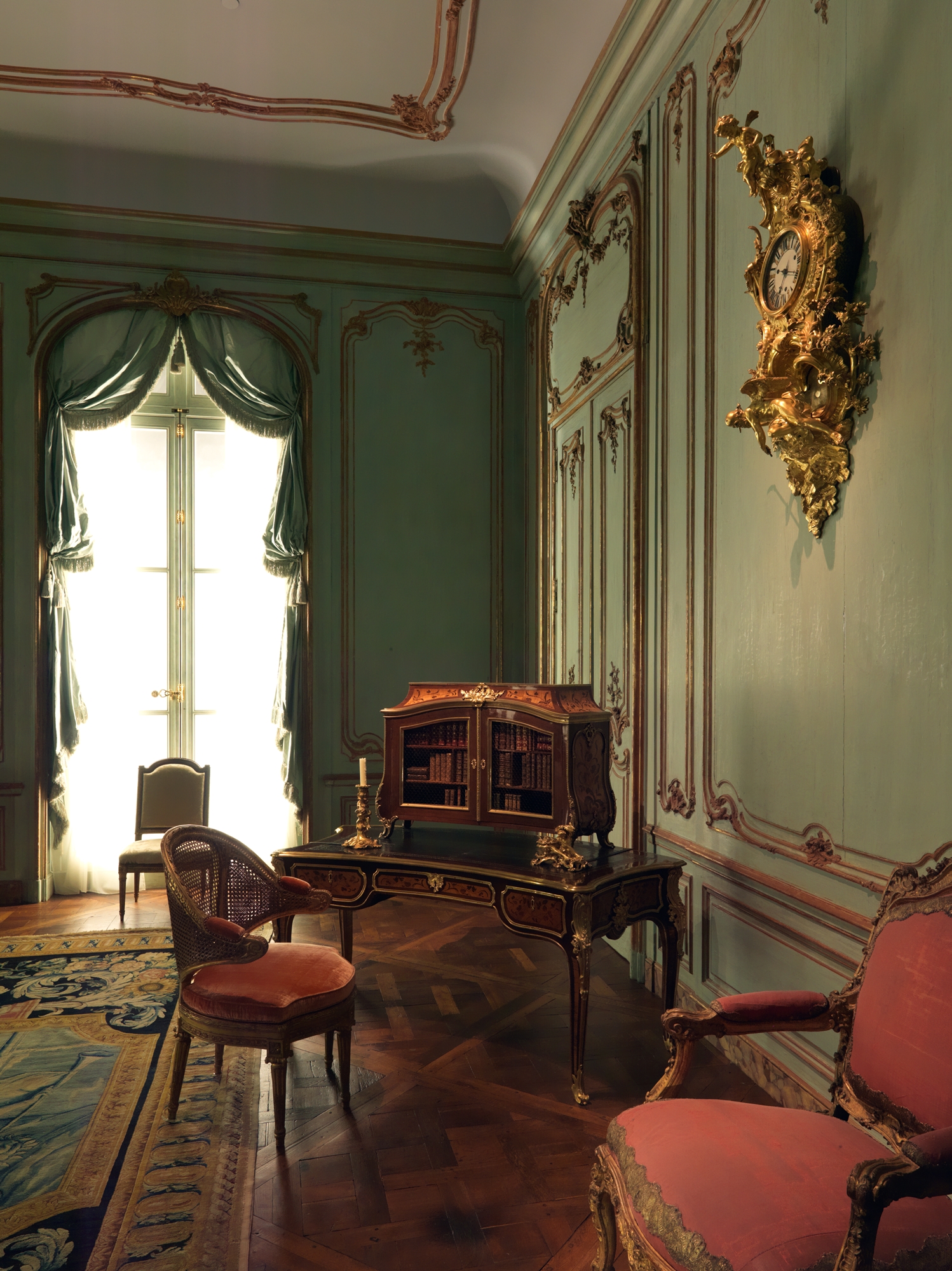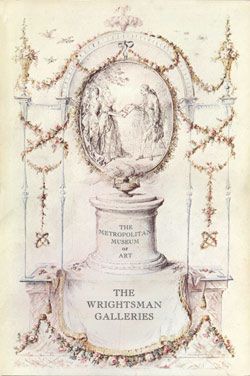Filing cabinet (cartonnier) (part of a set)
attributed to Joseph Baumhauer French
This filing cabinet is made by the French cabinetmaker Joseph Baumhauer, who also created the matching writing table in the museum’s collection (1979.172.2). Known as cartonniers or serre-papiers, filing cabinets were separate pieces intended to be placed on the table. Decorated on the sides and top with floral marquetry, the cabinet is a trapezoidal structure with a slightly concave front. It rests upon four short tapering cabriole legs mounted with gilt-bronze mounts in the shape of scrolled acanthus leaves. The front two doors are fitted with wire mesh and open up to reveal seven compartments arranged in three tiers. Pierre Verlet has suggested that separate filing cabinets eventually gave way to the fall-front secretary (see for example 1977.1.14), a type of furniture that afforded greater privacy by allowing the user to lock away personal papers from prying eyes.
Due to rights restrictions, this image cannot be enlarged, viewed at full screen, or downloaded.
This artwork is meant to be viewed from right to left. Scroll left to view more.
